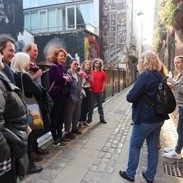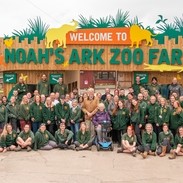Section 3: Know your customer
VisitBritain/Nemorin
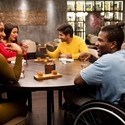
Top Tips
Focus on understanding how you can remove barriers to provide an accessible experience for your customer, rather than their medical condition(s).
If ever you’re unsure of how to best assist someone, ask them! Disabled people are experts in their own lived experience.
National charities provide great resources that can help you become more inclusive. Many of them also offer consultancy services.
Understanding your customers' requirements
Providing an accessible and inclusive experience is largely based on how you positively welcome and cater for customers with a range of differing impairments and health conditions. The only way to do that is to understand a little more about what these requirements may be, and how they might relate to the facilities, adjustments and support you can provide.
The first thing to be aware of is that there are:
- Physical impairments that affect things like movement and reach ranges;
- Sensory impairments that affect the ability to see, hear or communicate in the way that society generally expects;
- Cognitive impairments that might affect behaviours in social situations, or the ability to learn and retain information.
But that’s not all: impairments can be visible or non-visible (it is estimated that 70 to 80% are non-visible – UK Parliament, 2023), but both are as valid as each other and need to be understood and appreciated as such.
Impairments can also be permanent, temporary or even situational – think about the sudden accessibility requirements a new parent with twins in a double buggy may have at a hotel or on a bus, for example. An important factor to be aware of is that, for most disabled people, energy levels can also be impacted. This should be considered for physical spaces, customer service and business operations.
Whilst it is impossible to define every impairment and accessibility requirement, we’ve worked with national charities to share the latest information and best practice guidance relating to several impairment groups.
The key here is not to develop your knowledge around medical conditions, but instead to gain confidence in communicating with and providing for different customers. Being able to identify and remove barriers to create a positive experience for all is what accessible tourism is all about and having the confidence to ask your customers: “How can we make this the best possible experience for you?”. That in itself, rather than making assumptions, goes a long way.
Understanding more about autism, for example, will not mean you are able to predetermine exactly what an autistic customer might require. However, developing empathy and knowledge about the accessible facilities you can provide will enable you to offer an inclusive service that can be enjoyed and appreciated by all.
Fact
Did you know?
70% of disabled people will not return to a business after receiving poor customer service (Purple, 2022).
Tips
- Honestly share your accessibility information far and wide, including on your website and social media. Where possible, place this information front and centre, and try to avoid the need for customers to call to ask for further information.
- Ensure your staff members are trained in disability awareness and communication, bringing both confidence and empathy to how they cater for all customers, remove disabling barriers and make adjustments.
- Invite disabled people to visit your venue and give insight, feedback and recommendations as a way to help you improve.
- Pity is not necessary or helpful to anyone. Disabled customers are not asking for ‘special’ treatment or sympathy, just access to everything their non-disabled peers enjoy!
- Regardless of who your disabled customers are travelling with, always address them personally and not only their companions.
- Appreciate disabled people as the loyal, capable customers they are. Those that have a positive experience are likely to come back again and again, and tell their loved ones to do the same.
Did you know?
Dietary inclusion is also part of accessibility. Consider the inclusivity of any food and/or medication policies you have. For example, some people may need to bring their own food with them, require a quiet and private space for tube feeding, or need to know about ingredients, allergens or cross-contamination when purchasing food and drink from you.
The power of lived experience engagement
If you are looking to improve your accessibility, remember to engage with those who have lived experience of disability or other protected characteristics. However, ensure that you plan any engagement with care and take a true pan-disability approach, involving those with varying impairments and accessibility requirements.
Don’t always expect simple conversations and solutions; something that might work for a visually impaired customer is often the opposite to what would benefit a neurodivergent customer, for example (as you will find out in this section!) You will need to prioritise actions and come to an agreed compromise in some scenarios. It’ll all be worth it though for the rich insights you’ll receive in the process.
Something to consider
A moment for reflection
Think about the D/deaf and disabled people you know, both personally and professionally. Search the #AccessibleTourism hashtag on LinkedIn and spend 20 minutes learning something new from one of the articles you come across.
Case study 1

Croft Bungalow
“We seek feedback from every departing guest and ask for any insights into how we can improve. This drives our evolution more than anything. Since we started in 2016, we have now made more than 60 improvements based on guest feedback, including moving a light switch, adding extra grab rails, small bits of equipment like Parkinson’s-friendly cutlery, and even buying some plastic fish for the bubble tube in the sensory room.”
Accessibility personas
To support you whilst reading about differing impairment groups in this section, please refer to the Accessibility Personas within the downloads section of this toolkit. We have worked with individuals who have lived experience of certain impairments and accessibility requirements to create personas based on their real-life tourism experiences:
- Sarah is autistic, has neurodivergent daughters and often travels with the family’s assistance dog, Bruno.
- Ben and Tammy are married and both have mobility impairments that impact their walking gait and distance, reach ranges and the equipment they use to support them.
- Asif is deaf and a new dad, now navigating the tourism world with multiple requirements for both himself and his family.
- And Craig has completely lost his sight. He travels with his assistance dog, Bo, and is passionate about digital interventions that make his life easier.
Physical impairments
Customers with physical impairments may be wheelchair users or use other mobility equipment such as crutches or walking frames. They may be of shorter stature and regularly experience challenges relating to the heights of desks, lack of seating and limited reach ranges. They may be (but definitely won’t always be) older customers, or have sustained a temporary injury which makes navigating the built environment challenging.
Customers with mobility impairments
Travel, transport and tourism often does not provide an easy ride for people with mobility impairments. For example, figures published by the UK government in 2022 showed that only 20% of train stations in the UK have step-free access between the street and the platform, only 2% have level access with the train, meaning a ramp is required, and only 35% have accessible toilets.
Similarly, according to a 2022 report on the travel industry by marketing company MMGY Global, 96% of all respondents have faced a problem with accessible accommodation while travelling; 86% have faced difficulties with air travel, and 79% have also experienced transportation problems while in their destination.
VisitBritain/Daniel Wildey

- Wherever possible, signpost and link to local accessibility information that may be relevant to your customer’s end-to-end journey. Being able to easily find out more about the accessibility features of the local train station or where the nearest free Blue Badge parking or Changing Places facility is will likely prove very helpful.
- Mobility equipment is often considered to be an extension of a disabled person’s body and a positive part of their identity. Ask permission before touching a customer’s wheelchair or mobility aid.
- Think about the language you use when communicating with a customer who has a mobility impairment. Someone is a ‘wheelchair user’ rather than ‘wheelchair bound’, for example. And it is never appropriate in a professional environment to ask someone ‘what happened to them’ or similar.
- Consider your body language. In a short, transactional exchange, you usually wouldn’t need to bend down to meet the eye level of a wheelchair user or someone of shorter stature, simply step slightly further back to reduce the angle required for eye contact. If a longer discussion or help with filling forms is required, for example, try to find a quieter place to sit down with the person so that a conversation at eye level can be had in a professional manner.
- Provide level access (without steps or raised thresholds) ideally at the main entrance to your venue, or at an alternative entrance if necessary. This may include access by ramp (permanent or temporary) or lift.
- Provide lowered desks, payment options and interpretation information where possible. Inclusively designed dwell spaces, with seating that has back and armrests, are also really important to many customers with mobility impairments.
Although your customers with mobility impairments may have the most visible accessibility requirements, it is estimated that only around 7% of disabled people in England use a wheelchair. It is therefore important to also provide an inclusive experience to customers with other impairments, as detailed in the sections below.
Case study 2
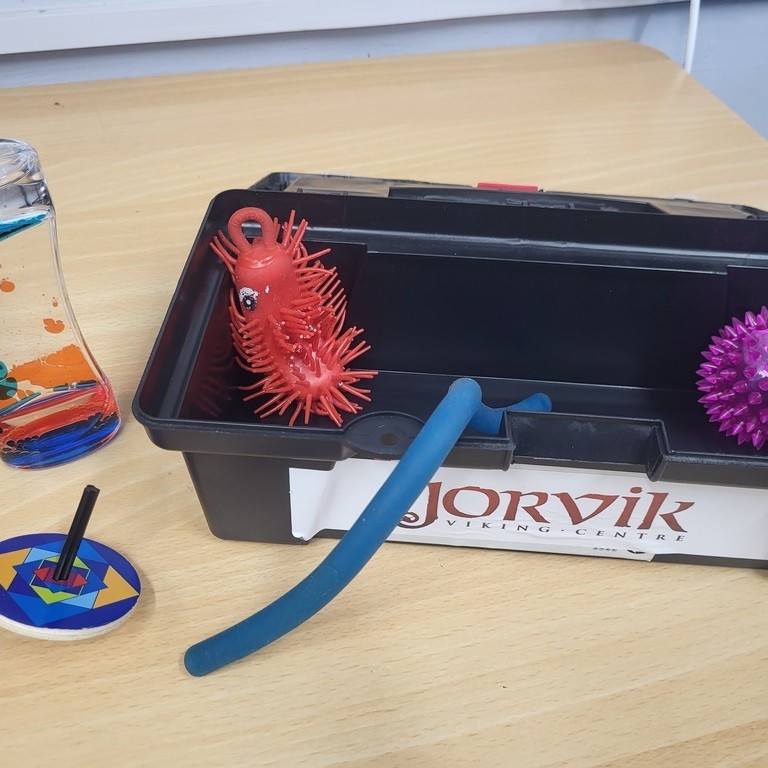
The JORVIK group
The JORVIK group is a set of attractions that explore an archaeological discovery of the Viking Age city of Jorvik we now know as York. Whilst not all of their attractions are accessible to all, the group is working hard to provide alternative, equitable experiences where possible.
“The ride at JORVIK is not accessible to those in larger wheelchairs. To ensure everyone can access the information, we have created a 360-degree tour of the ride and the plan is to do similar for our City Walls experience. We also offer an accessible version of our City Walls walking tour.”
Sensory impairments
A sensory impairment affects one or more of our senses: sight, hearing, smell, touch, taste and/or spatial awareness. Someone does not need to have full loss of a sense to have a sensory impairment, and mild to moderate loss is usually more common. In this section, we focus on two types of sensory impairments: hearing and sight loss.
Customers who are D/deaf or have hearing loss
With more than 12 million people in the UK with some form of hearing loss, or one in five of the population, taking action to attract and retain these customers makes good commercial and legal sense (RNID, 2023). The population is ageing, which means that the number of people with hearing loss is increasing, so investing in hearing support is investing in the future of your business. Your staff are just as important as your customers, so any improvements you make will also benefit members of your team with hearing loss.
Fact
Did you know?
Throughout this toolkit, we have used the term ‘D/deaf’ to ensure we are representing Deaf people who use British Sign Language (BSL) as their first language and are part of the Deaf community, and deaf people who have acquired hearing loss and are more likely to use hearing aids and lipread as they identify with spoken language and the hearing community.
Tips
- Always face the person you’re talking to and don’t cover your mouth. This enables them to hear you more clearly and allows them to lipread you if they need to.
- Speak clearly but not too slowly and use natural facial expressions and gestures to give context. A person who lipreads understands people best when they speak normally.
- Always repeat yourself if the person hasn’t understood. You could also try saying the phrase in a different way.
- Use clear, concise language. Be careful not to ‘waffle’, or you’ll be harder to follow.
- Don’t shout. It’s uncomfortable for hearing aid wearers and can look and feel aggressive.
- Find a quiet place with good lighting. You’ll be easier to hear in a quiet environment and good lighting will help the person to lipread you if they need to.
- If necessary, write down what you want to say. Use pen on paper or text on device screens to get your message across, but don’t write an essay.
- As soon as is possible, ensure your staff members are trained in D/deaf awareness; more than 70% of hearing aid users would book with an organisation that has D/deaf aware staff over one that doesn’t.
- Ensure any areas that rely on communication, such as reception desks, bars, ticket offices, meeting rooms and auditoriums, have hearing loops installed and are inclusively signed. Further information on hearing loops can be found in Section 5: Accessible Features and Facilities.
- When buying telephones for guest bedrooms and public areas, ensure they have voice amplification and are hearing aid compatible.
- If your organisation provides guided tours, ensure that you have bookable British Sign Language tours available, and that systems are available on regular tours in which the tour guide’s voice is directly transmitted to hearing aids as well as headphones.
Fact
Did you know?
If you would like to learn how to communicate useful hospitality phrases in British Sign Language, CPL Learning offers this free, 10 minute course to help you to do just that.
Sensory impairments continued
Blind and partially sighted customers
There are over two million people living with sight loss in the UK, with 340,000 people being registered as blind or partially sighted (RNIB, 2021). While it is important to be aware of, and inclusively cater for, customers that have no vision, 93% of blind and partially sighted people do have some vision. Similarly, not all blind or partially sighted people will use a cane or have an assistance dog with them, so don’t rely on visual, mobility aids to understand who may benefit from your accessible features and services. The best thing you can do is ask your customers two questions. Firstly, whether they would like any help, and secondly, how you can best assist them.
When communicating with someone who is blind or partially sighted, remember to provide some helpful visual detail. For example, a customer with sight loss might not be able to make out your uniform or name badge, so stating your name and the fact you’re a member of staff or a volunteer could give them some helpful context (and a bit more trust in you if you need to share directions or guide them).
When guiding a blind or partially sighted person, ensure they are holding onto you (by the arm or on the shoulder are two of the most preferred ways). In this way, they have the autonomy to let go if they do not feel safe, and you are not controlling the situation by grabbing onto them. More information and helpful videos can be found in RNIB’s guiding advice page.
And ultimately… relax. Have general conversations just like you would with any other customer and don’t overthink the situation. It is absolutely okay to use phrases like ‘see you later’ and if you’re ever unsure of how to best assist a blind or partially sighted customer, remember they are the expert of their own lived experience and ask them.
- Ensure clear, highly contrasting wayfinding and navigation is present at the entrance to your venue, inside the building or experience itself, and on approach to the exit. The access routes signposted should be void of obstacles, trip hazards and low level obstructions to promote a safe and stress-free experience for all.
- If your attraction or experience relies on visual displays, provide audio described commentary to enhance the immersive and user experience for your blind and partially sighted customers. We’d recommend that this is co-created with those who have lived experience of sight loss.
- Providing accessibility information online can really aid preparation, but it must be able to be read by screen reader users - conduct manual testing to ensure that this is the case. For more information on digital accessibility, go to Marketing your Accessibility.
Further information relating to communicating with blind and partially sighted people, learning how to be a sighted guide, and promoting experiences such as object handling and touch tours can be found on the VocalEyes resources page.
Fact
Did you know?
Apps that promote accessible identification and wayfinding can be particularly useful to blind and partially sighted people. These include GoodMaps, which provides on-demand indoor and outdoor navigation on a user’s mobile phone, and Be My Eyes, which allows blind and partially sighted people to connect with a sighted volunteer over live video should they need assistance with tasks such as checking train tickets, item prices or locating a room in an unfamiliar building.
Customers with assistance dogs
While most customers with assistance dogs will have sensory impairments, it is important to note that assistance dogs are also trained to help those with autism, epilepsy, diabetes, physical impairments and more.
Thousands of people rely on assistance dogs to help them with day-to-day activities that many others take for granted. As well as carrying out practical tasks and supporting with navigation, assistance dogs bring an all-important sense of confidence and comfort to many of their owners. Assistance dogs are not pets and should never be approached or treated as such. Much like you should ask before touching a customer’s mobility aid, check with the owner before approaching an assistance dog (and don’t get defensive if they say ‘no’.).
VisitBritain/Pawel Libera
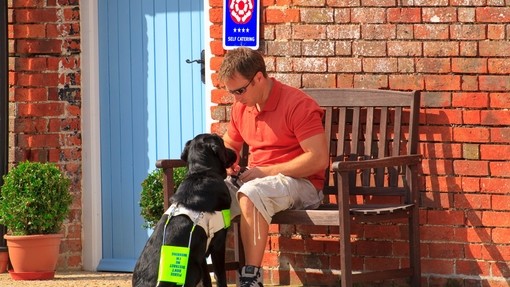
Under the Equality Act 2010, all tourism businesses (even those with a ‘no pets’ policy) have a legal obligation to welcome assistance dogs. There is no reference in the Equality Act (or supporting Statutory Code of Practice) to ‘support animals’ – including therapy animals or comfort animals. However, it is important to note that the Act protects any person that has a physical or mental impairment which has a long term and substantial adverse effect on their ability to carry out normal day-to-day activities (the Act’s definition of disability). Therefore, you should attempt to accommodate the needs of someone who has a support animal for such conditions, and have a valid, justifiable reason if you refuse to allow the animal on the premises. To find out more, go to VisitEngland’s Pink Book Online page relating to disabled customers.
Fact
Did you know?
Assistance dogs help those who are D/deaf or have hearing loss, too. They can sometimes be identified as hearing dogs if they wear a burgundy jacket.
Neurodiversity and non-visible impairments
Neurodiversity refers to the diversity of human minds, and the infinite variation in neuro-cognitive function with regards to:
- Learning;
- Social engagement;
- Mood;
- Mental functions;
- Cognitive functions;
- Sensory functions.
It is estimated that one in seven people are neurodivergent (University of Edinburgh, 2020), and while conditions such as dyslexia, ADHD and PTSD, Tourette’s, Parkinson’s, depression and anxiety are all also considered neurodivergent conditions, this section will focus on the neurodivergent and non-visible conditions of Autism and Dementia.
Autistic customers
Autism is a lifelong condition that affects how people see the world and interact with others. It is a spectrum condition, which means while all autistic people share certain characteristics, being autistic will affect them in different ways. Often people feel that being autistic is a fundamental aspect of their identity.
Autism is much more common than most people think. There are around 700,000 people in the UK on the autism spectrum – that’s more than one in 100. Together with their families, this means autism is a part of daily life for 2.8 million people. People from all nationalities and cultural, religious and social backgrounds can be autistic. Anyone can be autistic, although more men are officially diagnosed.
Autistic people see, hear and feel the world differently to other people, which can make it an overwhelming and isolating place. Some autistic people also have learning disabilities and/or mental health conditions. With the correct support and removal of barriers, tourism businesses can provide inclusive experiences for autistic people.
Autistic people can (but will not always):
- Find it difficult to understand and use language to communicate and may interpret phrases such as ‘his head is in the clouds’ literally.
- Find it difficult to understand and use tone of voice, facial expressions, body language, and the unspoken rules of language, like the give-and-take nature of conversations.
- Have difficulty recognising people’s feelings or expressing their own.
- Struggle to make and keep friends and maintain other social relationships.
- Find it difficult to understand and predict people’s behaviour.
- Have a strong need to stick to the familiar and find change and unexpected situations stressful.
- Have sensory sensitivities, for example over-sensitivity to loud noises, certain lights and strong smells.
- Have intense special interests.
Although almost everyone has heard of autism, only 16% of autistic people and their families think the public understand autism in a meaningful way. This lack of understanding has a daily impact on autistic people’s lives and is one of the major barriers they face to engaging in education, employment and leisure activities.
Understanding autism and making appropriate adjustments can make a big difference to the experiences of autistic people and their families or carers.
As their ‘Too Much Information’ campaign came to an end in 2018, the National Autistic Society published research that showed:
- 79% of autistic people and 70% of families said they felt socially isolated.
- 50% of autistic people and their families sometimes don’t go out because of concern about people’s reaction to their autism.
- 28% of autistic people have been asked to leave a public place because of behaviour associated with their autism.
Many of the barriers experienced are due to lack of public understanding but the nature of some environments – noisy, busy and filled with overwhelming sensory information – can also cause difficulties. Pre-visit information or supporting material can help autistic people and their families to prepare themselves properly for a visit. Investing in training helps owners and staff understand autism, enabling them to feel confident communicating with autistic people and removing any disabling barriers.
Case study 3
Simon Hadley

Birmingham Hippodrome
“We offer pre-visit materials such as easy-read guides, visual stories and videos, so audience members know what the building looks like, what facilities are available and have information about the show. We offer training to our front-facing teams so they can best support audience members and learn how we can use our accessible facilities in the strongest way possible.”
Tips
- Offer an opportunity for autistic customers to ‘pre-tool’ prior to visiting. This might mean offering open days, listing your accessible features and facilities in an accessibility guide or visual story like the Roman Baths have, or providing a captioned video tour of your venue that can be accessed online. Please note the current Accessibility Guide website will be closing on 31 March 2024. Find more information on the future of Accessibility Guides.
- If plans or environments change prior to a visit, do your best to notify all customers in advance.
- Where possible, create low arousal environments for your autistic customers. This could include:
- Providing a quiet area like the chill out room available at Eureka!
- Producing sensory maps that outline quieter routes and areas with dimmed lighting, as is available at the British Museum.
- Offering opening hours or specific sessions for autistic customers, as can be found at Glasgow Science Centre.
- Providing ear defenders and sensory activity packs for those who require them, like those that can be found at Seven Stories.
- Autistic customers may need time to process information, so be patient after asking a question or giving instructions. You can always rephrase a statement or write it down if required.
- Communicate calmly, positively and patiently with all your customers, as many impairments – including autism – are not always visible. Don’t judge if a customer is overwhelmed or experiencing a meltdown.
Case study 4

Leafy Fields Glamping
Leafy Fields Glamping started their business from their own lived experience and understanding of what it is like to take a glamping holiday as a neurodiverse family.
“It is not about any one specific feature or service that we might offer, such as our pre-arrival social story or allocated use of our sensory playroom. A neurotypical family staying at our site would not necessarily even notice the differences that mean the world to a neurodiverse family. It is about creating an environment where families feel unjudged and free to be themselves without having to explain or apologise… We have had families holiday with us as a whole family for the first time (previously, some of the family would stay home while the rest of the family go on holiday).”
Customers with dementia
Dementia is an umbrella term for several diseases that impact different parts of the brain and change the functions those parts of the brain control. There are many different types of dementia, but the most common type is Alzheimer’s disease.
According to the Alzheimer’s Society, approximately 900,000 people are living with dementia in the UK, and this will increase to 1.6 million people by 2040. To dispel a common myth, dementia is not just a disease of older adults, with 42,000 people under the age of 65 currently living with the condition.
Dementia is progressive, and different types of dementia tend to affect people in different ways. Dementia is a non-visible impairment, and it is therefore important for businesses to provide good support and information to every customer to help remove barriers.
A person with dementia might:
- Have issues with their day-to-day memory, for example: difficulties recalling events that happened recently.
- Struggle concentrating, planning or organising, for example: difficulty with solving problems or carrying out a sequence of tasks.
- Experience difficulties with language, for example: following a conversation or finding the right word.
- Experience confusion and disorientation related to times or places, for example: losing track of the day or date, or becoming confused about where they are (even in familiar places).
- Have visual perceptual difficulties, for example: when judging distances or misinterpreting patterns and reflections.
- Have heightened senses which make certain environments challenging, for example: if too noisy, warm or busy.
- Take longer to process information, leading to the need for patience with communication, movement and decision making.
- Find that their symptoms can vary a lot from one day to another.
Common challenges faced by people affected by dementia:
- Unfamiliar and busy environments, such as information desks and service counters, which can make communication difficult and increase confusion.
- Navigating new places, as people with dementia can sometimes get lost.
- Worries about locating and using the toilet. People with dementia may also experience difficulties with continence.
- Difficulties with mobility and getting around, for example: challenges with a lack of handrails, patterned carpets, black mats or shiny surfaces. Dark or reflective elements within the built environment can be misinterpreted as holes or water, respectively, and therefore avoided by someone with dementia.
- Worries that they or their loved one with dementia will get lost or walk off at night if the room or venue is not secure.
- When communicating with a customer who has dementia, focus on them and not their companions, remove any unnecessary distractions from the environment and be patient. Remember to also communicate non-verbally and smile.
- You might want to recap at points in the conversation to check understanding, and feel free to rephrase what you’re trying to say if needed. Listen carefully and let your customer express themselves without judgement; don’t be dismissive or make assumptions.
- Provide information on the dementia-friendly facilities you have, such as quiet places, accessible toilets and inclusive signage at key decision points.
- Provide information on local dementia-friendly businesses, activities, events and health care providers to allow people to plan in advance.
- Provide your customers with dementia with confirmation of their booking, clearly stating the amount paid or to be paid on arrival, as well as information on your venue. You may also want to think about providing written confirmation on request, and reminders for the booking closer to the date.
- Giving your customers a named contact if they have any questions after their booking, before arrival or during their visit.
- Use welcoming terminology when describing your customers – for example, say “living with dementia” instead of “suffering with dementia”.
- Ensure your staff wear name badges and make it clear they can support people with dementia – for example, by wearing the Dementia Friend badge.
- Flexibility, discretion and a hospitable nature are all key. Be prepared to assist customers with tasks such as filling in forms, and provide a quiet space and refreshment for those who may feel unsettled by new, unfamiliar surroundings.
Fact
Did you know?
Being able to provide wider understanding and support to the family members, carers and companions of someone with dementia is also key. These people can give guidance on activities and decision-making, build confidence on who to trust, confirm their loved one with dementia will enjoy something, and provide support in navigating what can sometimes be a very confusing world. In the UK, 40 to 50% of unpaid family carers spend 100 hours a week supporting someone with dementia, [Alzheimer’s Society, ‘Worst Hit’ report, 2020] more than twice the legal working limit.
Customers with dementia continued
Launched in May 2023 to support people living with dementia, and those that support them, the Dementia Services Development Centre (DSDC) at the University of Stirling has launched the Environments for Ageing and Dementia Design Assessment Tool (EADDAT). EADDAT can be used by businesses in all sectors to understand how their space can be more supportive for people living with dementia and, if necessary, make small adjustments that can make the environment more accommodating. It also has a self-certification scheme which can be promoted.
Fact
Did you know?
The national charity Dementia Adventure works with organisations to create inclusive services so that people with dementia can engage more with nature and have regular outdoor experiences.
Dementia Friends is an Alzheimer’s Society initiative with aims to change perceptions of dementia by promoting awareness and education. Individuals and organisations can join the initiative and show their support by attending online or face-to-face information sessions.
Sargent Group Consulting offer SEEAM Less consulting services (Staff, Environment, Equipment, Activities and Marketing) to help businesses become dementia-inclusive.
Case study 5
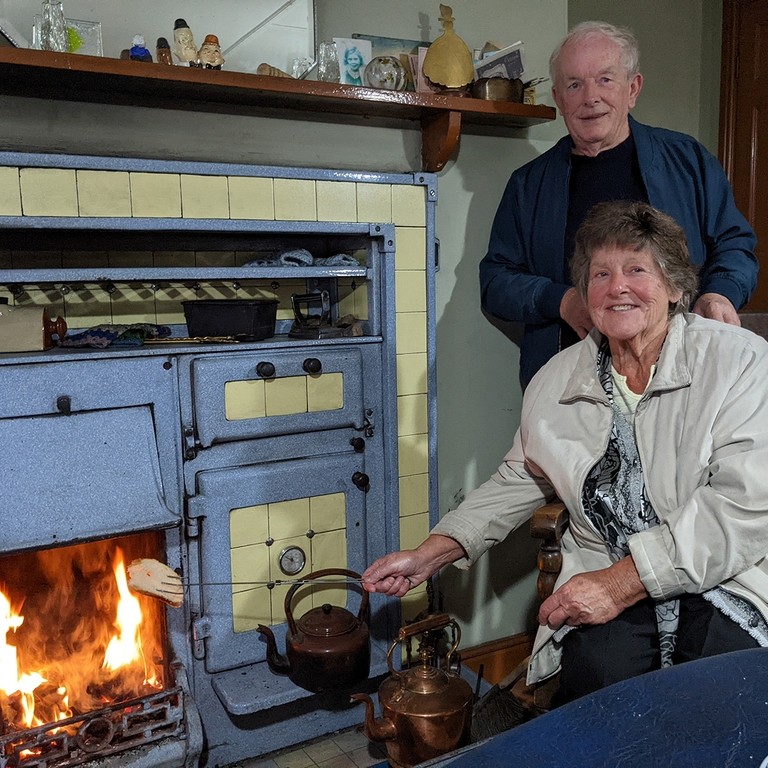
Beamish Museum
“Beamish, The Living Museum of the North has a dedicated Health & Wellbeing Team which runs a programme of activities for people living with dementia, other long-term health conditions and cognitive impairments.
The team is also passionate about making the whole museum as Dementia friendly as possible. Every new member of staff or volunteer attends a Dementia Friends workshop, regardless of their position. This not only benefits museum visitors but also helps improve the customer experience as it highlights the importance of patience, good communication and empathy. All staff who have attended these workshops are given the Dementia Friends ‘forget-me-not’ flower badge to wear. Beamish staff in period costume have a lovely crocheted version of the badge! Thanks to the fantastic team working at the museum, the Health & Wellbeing Team has also been able to support some people living with dementia to become volunteers at the museum.”
Customers with dementia part two
Approximately 70 to 80% of disabled people have a non-visible impairment, and autism and dementia are just two of these. Want to learn more about non-visible impairments and neurodiversity, and how you can provide an inclusive experience via the use of schemes such as the Hidden Disabilities Sunflower? Take the ‘Introduction to Neurodiversity and Non-Visible Impairments’ training module on Visit Birmingham’s Accessible Tourism Hub.
Customers with multiple and complex impairments
Some customers will have more than one impairment or a complex condition that may require particular levels of assistance, awareness and flexibility. Do be aware of this and communicate openly with people to find out how you might best be able to support them.
- Basic staff knowledge of disability awareness and communication methods such as BSL, Makaton, and the Deafblind Manual can be really helpful. Similarly, it is good for staff to be clear on fire safety and evacuation plans and know where medical personnel are located in case they are needed.
- At events and attractions, think carefully about how food and drink is prepared and presented. This includes a focus on seating areas to ensure safe and calm eating times. Time and space should be provided, as supported mealtimes can sometimes last an hour or more.
- Some individuals have 1:1, 2:1 or even 3:1 support. While you would not be expected to provide that, you should be prepared to support it and listen to those with accessibility requirements – and their support workers – as the people who best know what they require and when.
- If possible, it is really useful for all businesses to have locations where medication, foods, formulas and similar may be refrigerated.
- A clean and safe environment is key, but it doesn’t have to look clinical. Some people enjoy floor time or get sensory pleasure from putting things in their mouths. Cleanliness is therefore essential.
- Importantly, try to ensure that customers get one point of contact who is helpful, flexible and able to communicate throughout the booking process to really learn about someone’s requirements. It’s vital for safety, but also peace of mind.
Wider customer groups
Customers with age-related impairments
It is worth noting that, due to the correlation of impairment with ageing, senior market segments will typically include more people with health conditions and impairments. Having acquired conditions later in life, these people are less likely to view themselves as disabled, but will still very much benefit from accessible features and facilities, and being able to share their requirements ahead of time. The use of language is particularly important here; find out more about the value of utilising terminology relating to accessibility rather than disability in An Inclusive Welcome.
Something to consider
A moment for reflection
Is there a specific part of this section that really had an impact on you and you felt you learnt something from? Research more on the topic and share your findings in a short presentation to your colleagues. Sharing is certainly caring when it comes to knowledge!


